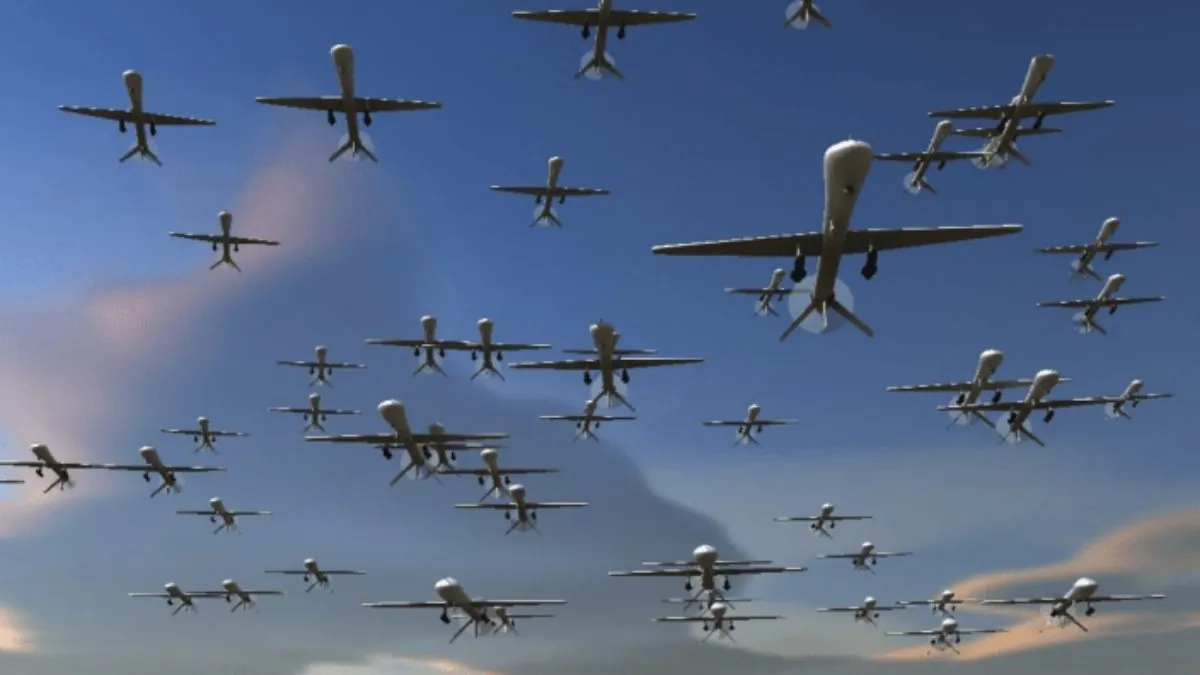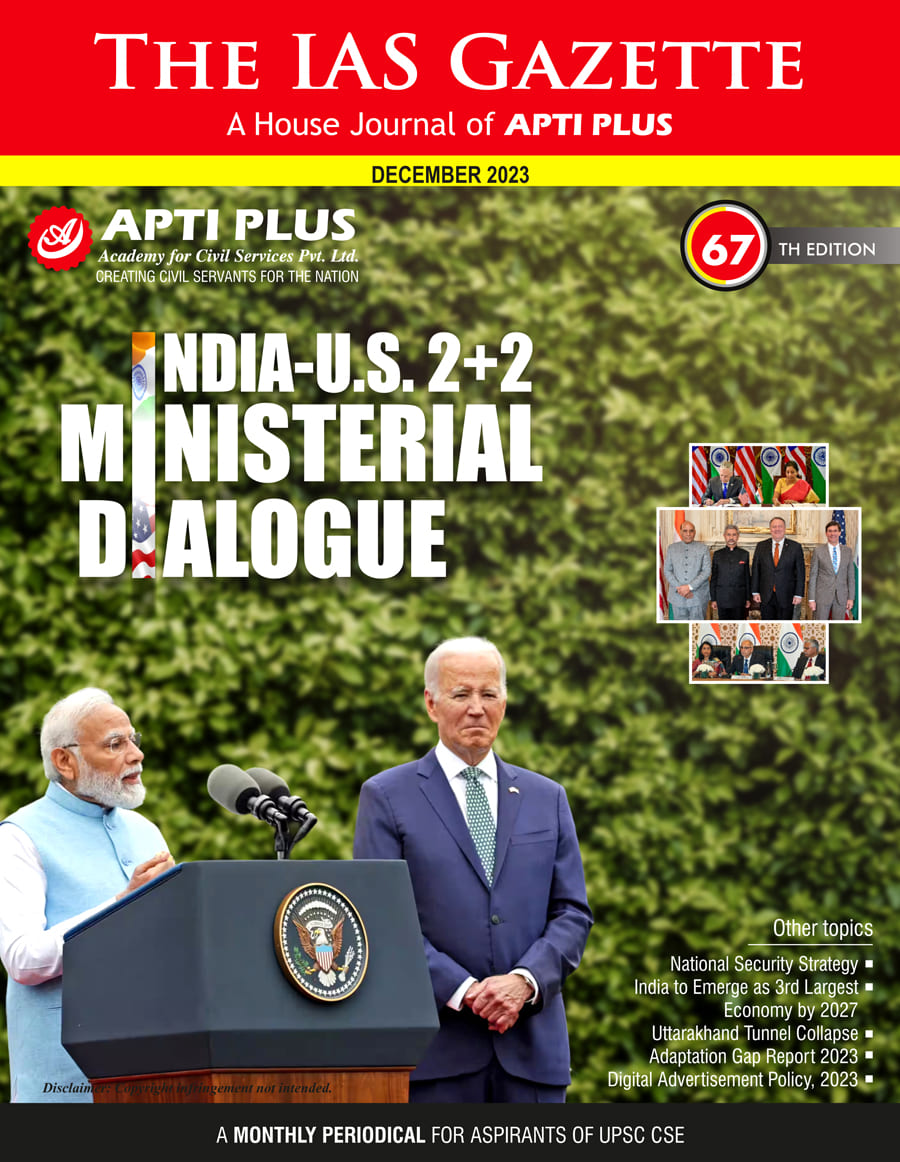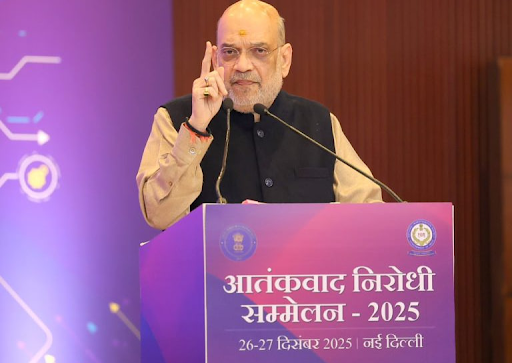Description

Disclaimer: Copyright infringement not intended.
Context
- The Indian Air Force (IAF) has initiated plans to counter the increasing threat posed by unmanned aerial systems (UAS) by issuing Requests for Proposals (RFPs) for various counter-drone systems.
- These systems are designed to address different operational scenarios, particularly the challenge presented by multiple swarm drones.
Details
Counter Unmanned Aircraft Systems (C-UAS)
- The C-UAS systems are intended to offer a comprehensive solution for detecting, tracking, identifying, designating, jamming, and neutralizing multiple threats simultaneously.
- Key features include:
- Multi-sensor Capability: Providing a comprehensive air situation picture using various sensors.
- Vehicle-Mounted System: Offering mobility for deployment in different operational areas.
- No-Fly Zone Enforcement: Intercepting identified threats and preventing unauthorized UAS intrusion.
- Recognition of Unknown UAS: Generating alerts based on user-defined parameters.
Micro Munitions Systems (MMS)
- These systems are designed to combat swarm drones attacking IAF bases from multiple directions.
- Key attributes of the MMS include:
- Guided Munition System: Capable of deploying multiple guided munitions laterally to counter swarms.
- Mobile Delivery Vehicle: Equipped with radar-controlled platforms launching 128 guided missiles per launch.
- Multi-Directional Engagement: Ability to launch missiles in various directions simultaneously.
Kamikaze Drone Systems (KDS)
- The KDS, also mounted on vehicles, aims to counter multiple swarm drones by utilizing satellite navigation-based flight and communication links.
- Notable features include:
- Satellite Navigation-Based System: Utilizing flight and communication links for drone control.
- Explosive-Laden Kamikaze Drones: Directing drones towards detected swarm drones to neutralize them by crashing into them.
- Comprehensive Air Situation Picture: Using radar and radio frequency detectors for detection, tracking, and neutralization.
Common Requirements for all Systems
- Integration with existing air defense and communication networks, anti-drone measures, and close-in weapon systems of the IAF.
- Deployment flexibility on rooftops or unprepared locations.
- All-weather capability and functionality at altitudes of up to 16,000 feet, ensuring nationwide deployment.
About Swarm drones
- Swarm drones, also known as drone swarms or unmanned aerial vehicle (UAV) swarms, represent a groundbreaking approach to aerial operations.
- These systems consist of multiple drones working together in a coordinated manner to achieve various objectives.

Technology behind Swarm Drones:
Swarm Control and Communication:
- Swarm Algorithms: These are essential for controlling the behavior of individual drones within the swarm and ensuring coordination.
- Communication Protocols: Efficient communication is crucial. Drones can communicate directly or through a central system like a ground station or a leader drone.
- Decentralized Control: Swarm drones often use decentralized decision-making processes to enhance adaptability and resilience.
Sensing and Perception:
- Sensors: Drones are equipped with various sensors (e.g., cameras, LiDAR, GPS) for navigation, obstacle detection, and situational awareness.
- Computer Vision: Enables drones to recognize and track objects, people, or terrain features, aiding in navigation and mission execution.
- Machine Learning and AI: Algorithms enable drones to learn, adapt, and make autonomous decisions based on incoming data.
Swarm Formation and Coordination:
- Formation Flying: Algorithms enable drones to maintain specific formations for different purposes, like maximizing coverage or minimizing vulnerability.
- Collaborative Tasks: Drones can collaborate to perform tasks collectively, such as mapping an area, delivering payloads, or conducting surveillance.
Applications of Swarm Drones:
Military and Defense:
- Surveillance and Reconnaissance: Swarm drones can cover vast areas, gather intelligence, and monitor enemy movements.
- Target Identification and Attack: They can identify and engage targets collectively, enhancing precision and efficiency.
- Electronic Warfare: Swarm drones can disrupt enemy communication systems or provide electronic support.
Civilian and Commercial:
- Search and Rescue: Swarm drones can cover large areas quickly, aiding in locating missing persons or disaster-stricken areas.
- Agriculture: They assist in crop monitoring, spraying pesticides, and assessing field conditions.
- Entertainment and Light Shows: Used for spectacular aerial displays during events and celebrations.
Infrastructure and Maintenance:
- Inspections: Swarm drones can inspect infrastructure like pipelines, power lines, and buildings more efficiently.
- Construction: They might assist in tasks like 3D mapping, material transport, and building maintenance.
Indian scenario:
- Several Indian startups and organizations have made notable strides in developing indigenous swarm drones capable of surveillance and performing attack missions.
Winners of Indian Air Force Swarm Drone Competition:
- NewSpace Research & Technologies Pvt Ltd: Led by former IAF officer Sameer Joshi, NewSpace won the 'swarm architecture' award in the Indian Air Force's competition. They secured a significant USD 15 million swarm drone order from the Indian Army. Hindustan Aeronautics Ltd. is supporting NewSpace in developing these drones.
- Flaire Unmanned Systems Pvt. Ltd. (Incubated by Delhi Technology University): This team partnered with Adani Defence and won the 'communication architecture' award in the competition.
- Dhaksha Unmanned Systems: Awarded the 'drone architecture' award in the competition, showcasing their expertise in designing advanced drone architectures.
DRDO's Swarm Drone Technology Showcase:
- In November 2021, the Defense Research and Development Organisation (DRDO) showcased armed swarm technology designed for minimal human intervention.
- These drones are designed to operate in high-altitude regions, rough weather conditions, and boast a speed of 100 km/h.
- Notably, they possess the capability to strike multiple drones at a target, enhancing their effectiveness in combat scenarios.
Indian Air Force Initiatives:
- The Indian Air Force launched the Mehar Baba Swarm Drone Competition in 2018 to promote drone development.
- This three-year-long competition aimed to encourage different organizations to innovate and contribute to the advancement of swarm drone technology.
International Examples of Swarm Drone Deployment:
- The use of swarm drones has also been demonstrated on the international stage, notably by the Israeli Defence Forces.
- They utilized swarm drones to locate rocket launchers situated in Gaza, showcasing the effectiveness of these technologies in reconnaissance and target identification.

Conclusion
The development and acquisition of these systems underscore the IAF's proactive approach in countering evolving threats from unmanned aerial systems, particularly swarm drones, and aim to bolster India's defense capabilities against such threats in varied operational environments. These counter-drone systems represent a concerted effort to harness technology to safeguard against the growing challenges posed by drones in military and security contexts.
|
PRACTICE QUESTION
Q. What are the challenges and ethical considerations associated with the widespread adoption of swarm drones? How can nations leverage swarm technology while addressing these challenges for enhancing security and technological advancements? (250 Words)
|










